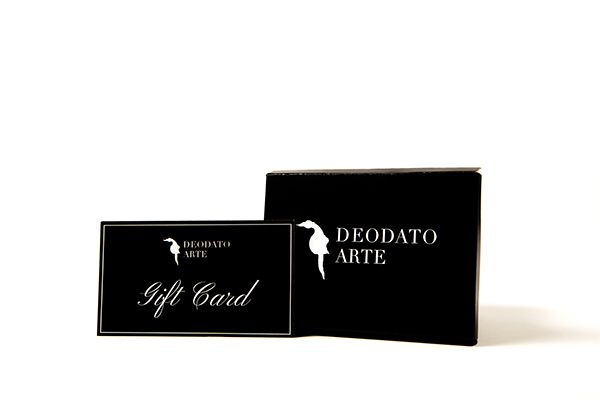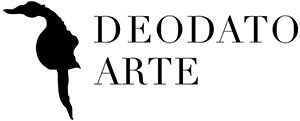
Thank you!

Manolo Valdés
-
-
Perfil I
Valdés Manolo£2,429.19 VAT Margin (art. 36)VAT included
Products with VAT included show a price calculated with VAT tax, so the additional tax of 22% is already added to the price of these products.
VAT Margin
The products with VAT Margin apply the additional tax of 22% only on the margin, the difference between the price at which the product is purchased and the price at which the same product is resold.
33 cm x 40 cm
Manolo Valdés, artist whose paintings are timeless
The Spanish painter Manolo Valdés, artist internationally renowned, currently lives and works in New York. Our idea of a geometric and compartmentalised time is problematised in the products of an incessant research by Manolo Valdés, paintings in which modern art is mixed and reinterpreted in the light of contemporary thought, resulting in a brilliant historical revision that respects the essence of the original work.
Manolo Valdés: biography of the artist
Manolo Valdés was born in 1942 in Valencia. After graduating from the local Dominican school, he enrolled in the San Carlos School of Fine Arts, but he dropped out of the School two years later to devote himself to painting. For Manolo Valdés, biography and art are irreversibly intertwined from an early age: being an apprentice painter at the age of fifteen, he held his first solo exhibition at the Nebli Gallery in Madrid when he was twenty years old.
For Manolo Valdés, Valencia was a privileged point of observation on the Spanish artistic and cultural scene of the time. Among the contemporaries, painters Jean Antonio Toledo and Rafael Solbes had a similar vision to Manolo Valdés. Equipo Crónica, a pioneering Spanish Pop Art collective, was born in 1964 as a result of their collaboration.
Thanks to the fruitful work of Jean Antonio Toledo, Rafael Solbes and Manolo Valdés, Equipo Crónica remained active until 1981. It combined American Pop Art with the figurative aesthetics of the 1960s Nueva Figuración movement, taking a critical approach to Spanish politics and art history, and practicing quotation and self-criticism. Its founders were inspired by the works of great masters such as Pablo Picasso and Diego Velázquez.
Toledo left the group a year after its foundation. However, thanks to the efforts of Rafael Solbes and Manolo Valdés, Equipo Cronica opened its first exhibition in the same year, in Reggio Emilia. Numerous successful experiences followed, including the exhibition 'Kunst and Politik' in Karlsruhe, Wuppertal and Cologne.
After Solbes' death in 1981, the only one who remained in the group was Manolo Valdés. Equipo Crónica was thus forced to come to an end, but the artist continued his research, increasingly refining a work of appropriation of images associated with specific art-historical movements, which were reshaped and reinterpreted without the political implications that interested his previous works.
The 1990s were a period of great success for Manolo Valdés. Marlborough Gallery (New York) and Il Gabbiano Gallery (Rome) hosted his first solo exhibitions. In 1999, the artist represented Spain at the Venice Biennale, and three years later he had a retrospective at the Guggenheim. Still active also in the field of sculpture, Manolo Valdés lives and works in New York.
Manolo Valdés: Pietrasanta
Italy was the home to several masterpieces by Manolo Valdés. Pietrasanta, Tuscany, hosts some of the artist's works featured in the 'Poetics of Translation' exhibition, which took place in summer 2018.
In the exhibition dedicated to Manolo Valdés, sculpture and painting were combined. On the occasion, five monumental works were placed in Piazza Duomo and one on the Tonfano pier. Two other masterpieces, together with smaller works (in terms of size) were placed on the churchyard and inside the church of Sant'Agostino (Pietrasanta). Manolo Valdés dotted the city and the church with more than forty masterpieces, almost all of which were exhibited for the first time in Italy.
Manolo Valdés art works
A strong political intent characterizes the works by Manolo Valdés, paintings in which his personal style reinterprets history in a contemporary key, without distancing it from its original subjects. By drawing on the work of great masters such as Velázquez, Rembrandt, Rubens, Matisse and Picasso, the artist decontextualizes familiar images, placing them under a new light.
In the artistic production of Manolo Valdés, paintings and sculptures merge image and matter in masterpieces that oscillate between Pop Art and material art, combining the painter's social and political commitment with an attempt to reinvent himself every time.
The timelessness of the images is a pillar of the visual experience in the works by Manolo Valdés, artist who inflates the dimensions of the figures, abstracts their form and minimizes their details. A further determining factor in his works is the coarse application of paint, sometimes accompanied by the use of unusual materials.
Las Meninas, Manolo Valdés
In the series Las Meninas, Manolo Vades includes sculptures inspired by Diego Velázquez. His recurring images are the subject of a work of appropriation and decontextualization by Manolo Valdés. Reina Mariana is an emblematic example. In its three-dimensional rendering, the figure is embellished with a vitality unknown to its original version, without altering its intrinsic royalty.
Manolo Valdés, Butterflies
For Manolo Valdés, butterflies in Central Park and a painting by Henri Matisse were a source of inspiration for this sculpture. In fact, the original Spanish name of the work by Manolo Valdés, Mariposa, means “butterfly”. Made of aluminium and epoxy paint, it weighs more than five tonnes and measures 516x665x670 cm. It is currently located in Plaza Galicia in Alicante.
Manolo Valdés art for sale with prices and value on Deodato Arte
If you are interested in Manolo Valdés, paintings and other carefully selected works by the artist are available on Deodato Arte.
Would you like to know more about Manolo Valdés? Prices and values of his masterpieces are available on our website. All Manolo Valdés' paintings proposed by Deodato Arte Contemporary Art Gallery are provided with authentication certificate.
For any information about Manolo Valdés (prices, value and curiosities about his works) do not hesitate to contact us at our e-mail address [email protected].











 Register
Register Wishlist
Wishlist Contact Us
Contact Us
